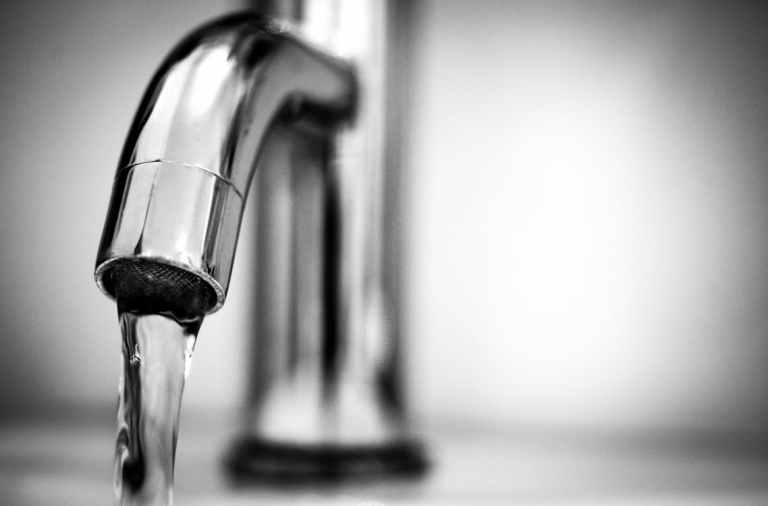Key Takeaways from the Safe Drinking Water Act

What is the Safe Drinking Water Act? Does it ensure the water you and your family use and drink is safe? In this article, we take an in-depth look at questions such as these regarding the Safe Drinking Water Act.
According to the United States Census Bureau, the current population of the United States of America is about 328 million people. The U.S. Geological Survey claims about 87% of the population use a publicly-supplied water source for their whole-house water supply.
Where Does the Water In My Home Come From?
Are you a part of that 87%? Have you ever thought about the water that comes from your faucet? The water that you and your family use every day, for drinking, washing, bathing, cooking, and whatever else you may use water for, is a necessity for life.
To answer the question, if you are a part of the 87%, your water comes from a public water municipality. This is where the water is collected, processed, filtered, and sent into an extensive underground piping network that brings the water to your meter, where it is connected to your whole-house plumbing.
Most public municipalities follow the same process for collection and filtration. Over half of all municipal water is collected from surface water, such as rivers and lakes, the remaining is sourced from groundwater.
This is the most common filtration process for municipalities before the water is sent to your home:
- Coagulation and Flocculation: This is a process of injecting positively charged chemicals into the water, which binds particles already in the water with the chemical, creating larger particles, called floc.
- Sedimentation: The water is then sent to a large tank where the floc settles at the bottom.
- Filtration: The clear water on the top is then sent through various filters including sand, gravel, and charcoal filters with multiple pore sizes.
- Disinfection: After filtration, a disinfecting chemical such as chlorine or chloramine is added into the water to kill any remaining bacteria, viruses, or parasites. It also is meant to keep the water protected on its way throughout the municipality plumbing.
The water is then sent through the piping network which reaches your home. And unfortunately, many areas are still having water supplied through iron galvanized piping.
What is the Safe Drinking Water Act (SDWA)?
The Safe Drinking Water Act was established in 1974. Its primary goal is to focus on all waters that are designed for drinking use or potentially could be for drinking water use. The SDWA gives authority to the EPA to institute and enforce regulations that protect the health of the populous at public water supplies – AKA, the water supply for 87% of the population.
According to the EPA, “The Act authorizes EPA to establish minimum standards to protect tap water and requires all owners or operators of public water systems to comply with these primary (health-related) standards.”
The most recent amendment of the SDWA, which was in 1996, states that the EPA is required to consider a detailed risk and cost assessment and peer-reviewed science and research when establishing these standards.
Does the SDWA Protect My Family From Contaminants in the Water?
Okay, we’ve given you the information on what the SDWA is: most water used in America comes from municipalities, and these municipalities need to have standards to maintain quality water for public health. Those standards are derived from the SDWA.
But now it is time to ask the real question, is the public water healthy? The water that comes into my home, is it legitimately safe?
Water that comes from municipalities and meets the regulations and standards established is the best quality of water that can be expected from municipalities that are in charge of mass-filtration and distribution. To make the quality of water any better coming out of the network of water pipes would cost a fortune, and the EPA knows that. To maintain the low cost of water that almost all Americans are accustom to, the water quality standards could not be to a point that it would cost the municipalities too much to treat the water to that level.
Municipalities do what is required to provide water that meets the standards set for them to follow. And they do a great job in our opinion. But, water that meets the standards set is far from contaminant-free water. In fact, there are many contaminants in public water.
Here are a few reasons why we believe they should call it the “Regulatory Water Act” not the Safe Drinking Water Act.
- Municipalities do not test the water that comes into your home. So they don’t test what is picked up through the delivery.
- The water that is sampled, is primarily only tested in the distribution and filtration centers.
- Municipalities are only required to regulate 93 contaminants, while 60,000 contaminants have been found to possibly occur in municipal water.
- Out of those 93 contaminants, only one has a “Max Contaminant Level” of ZERO – which is bacteria. Whereas all the other contaminants are allowed to be present up to a certain amount.
We wrote an article covering the many contaminants found in municipal water, going in more depth than possible in this article.
What is in the Water That Supplies My Home?
While there are many contaminants that could be covered, as mentioned above, this article will only cover a few.
Chlorine: A primary disinfectant used in Municipal water filtration is Chlorine. It can often be smelled and tasted in normal municipal water that enters homes. Perhaps you’re thinking, “I don’t smell or taste it at all!” Many people have adjusted to it over the time they have used municipal water. But, go a month using chlorine-free water and you’ll be amazed by the difference if you try to switch back. Chlorine is actually bad for you. It’s a toxic chemical. It’s not healthy to ingest at any level and can cause your skin to become dry and itchy.
Hardness: Most municipalities in the U.S. have hard water. That is due to calcium and magnesium in the water. It is not a health concern but rather affects plumbing, water-using appliances, and water heaters. It can also affect how your skin and hair feel. To learn more about hardness, read this article.
Lead: Do you remember the situation in Flint, Michigan regarding lead being found in the main water supply? Did you know that it wasn’t that the municipality wasn’t filtering the water enough? It was the old piping that carried the water to the homes that secreted the lead.
Many cities used lead-laced pipes for water and service lines decades ago. According to Next City, there are still lead-laced pipes in the ground throughout the U.S. It is simply too much money to replace this massive infrastructure of underground water piping. In some cases, cities don’t know where the possible lead-laced old piping even.
Other Contaminants: There are many other possible chemicals and contaminants found in municipal water. To read a more in-depth article on the specific contaminants in the water, you can read this article that we wrote going over that specific subject.
How Do I Make My Water Truly Safe and Healthy?
The solution? Water filtration and drinking water purification at home entry. What does this mean? Since the water municipalities are providing cannot be delivered in high water quality, every home should have its own more fine-tuned filtration system, both for whole-house water and even more intense purification for drinking water.
Key Takeaways
Perhaps the Safe Drinking Water Act should be renamed as the Usable Drinking Water Act. The key takeaways are this:
- The Safe Drinking Water Act led to regulations and standards being put in place for public water quality.
- The municipalities understand these standards and follow them to successful deliver water that meets these standards.
- It would cost too much to deliver high-quality water in mass-production to each household.
- Individual home filtration is the solution to providing high-quality water out of your faucet.
Want to learn even more about whole-home water purification in Knoxville and Nashville? Check out our Knoxville and Nashville Residents Guide to Water Purification. You can also contact our team.
Ready to Take Control of Your Water Supply?
Don’t wait for water shortages or unreliable sources to disrupt your life. With our Rainwater Harvesting systems, you can enjoy a sustainable, reliable, and completely self-sufficient water solution tailored to your home’s needs.

